Leghorn chickens are a breed of chicken originating in Tuscany, Italy. More than anything else, this chicken is known for its high egg-laying capacity – making it a popular choice for backyard chicken owners and small farmers. In this article, we’ll take a closer look at the history and appearance of the Leghorn. We’ll also look at some pros and cons of keeping this breed in your flock.
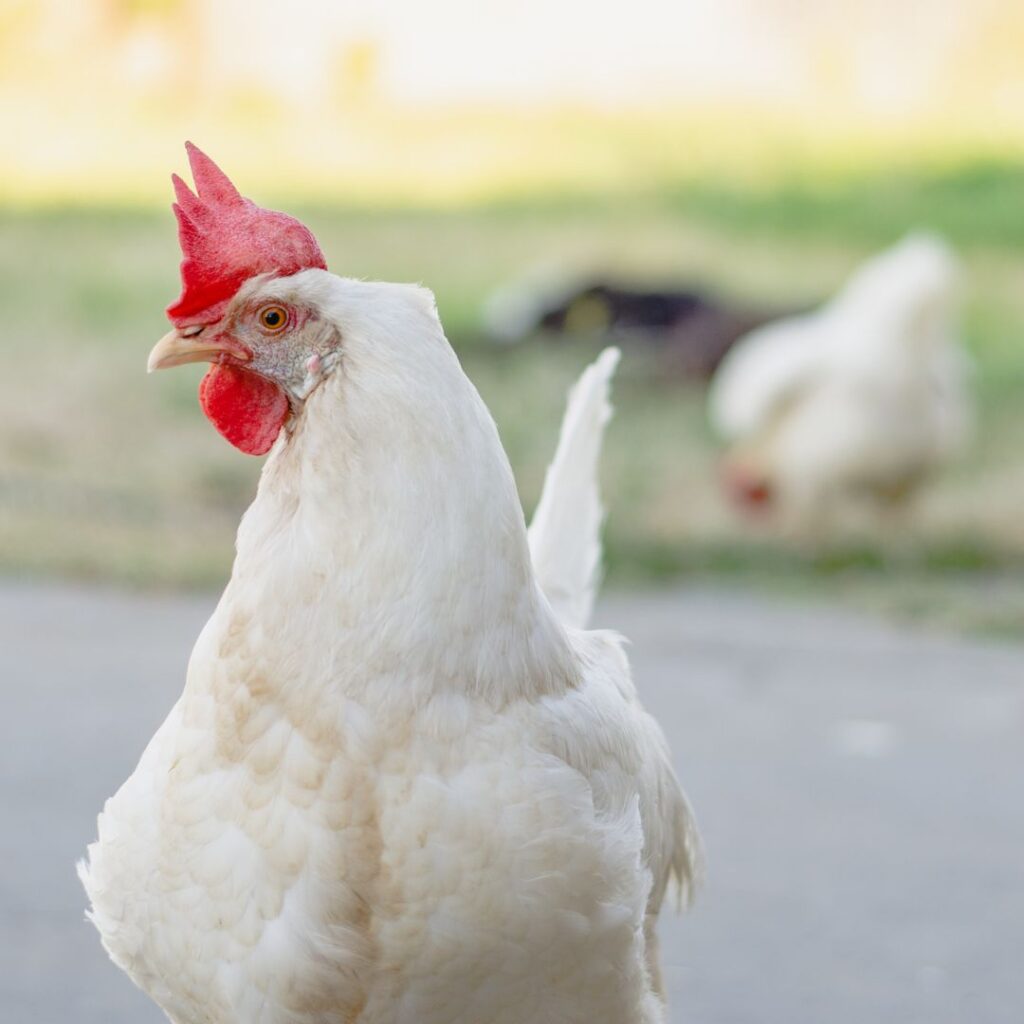
History and Origin
This popular breed of chicken is known for its egg-laying ability. Although the origins of the Leghorn breed are unknown, they likely were developed from one of the small landrace chickens in the Tuscan region of northern Italy. These Livornese chickens were small but laid many eggs and did not need much food.
In 1828, an Englishman named Captain Richard Hawker brought some of these chickens back to England and began breeding them. The chickens became known as “Leghorns,” after the port city of Leghorn in Italy from which they came.
The History of Leghorn chickens
Captain Henry Shattuck first brought the Leghorn chicken breed to North America in 1828. The APA Standard of protection recognized them in 1874. Initially, they were bred in Tuscany, Italy, from chickens of Spanish descent.
This breed was developed specifically for producing eggs and quickly became one of the most popular laying hens in the United States. Today, they are still one of the most common industrial hens found in commercial egg facilities.
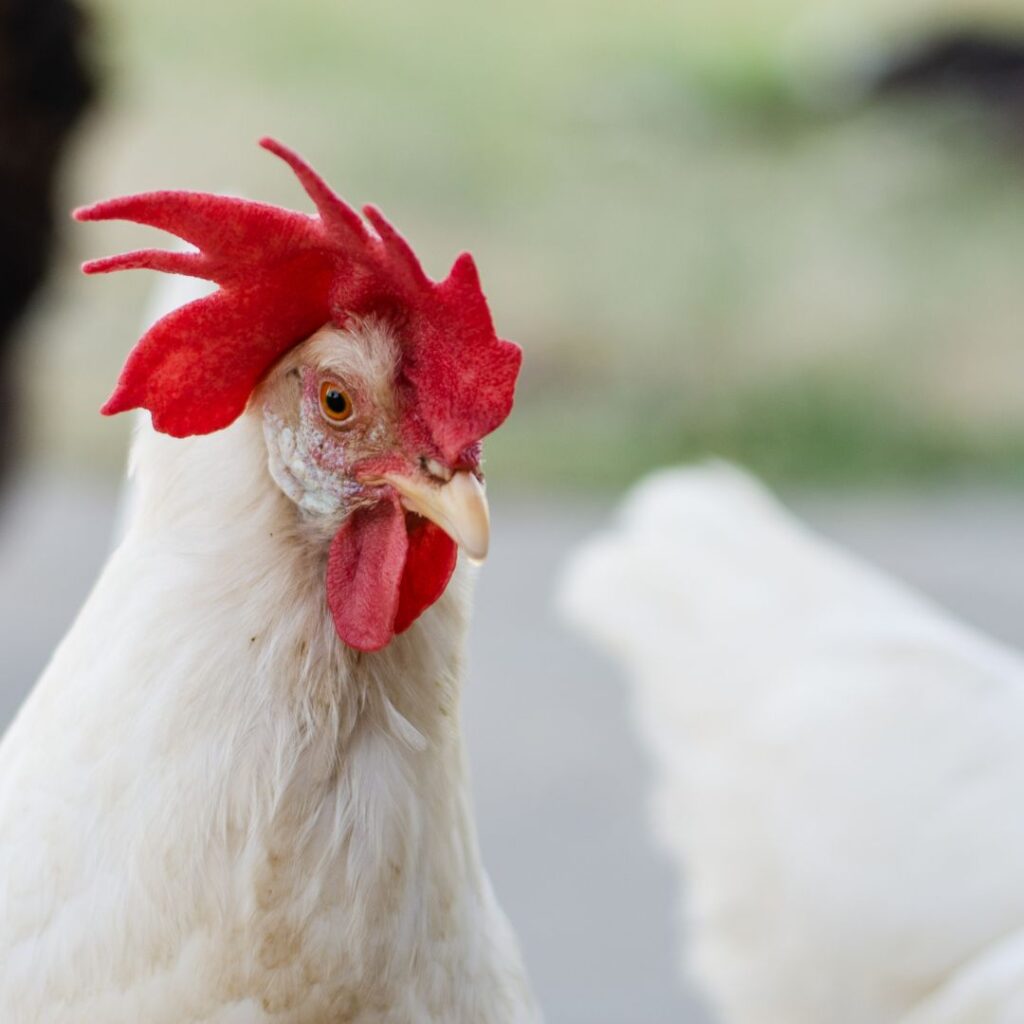
Leghorn Breed Standard and Appearance
White Leghorns are distinguished from other chicken breeds’ by their striking white plumage. They are relatively small chickens, with hens typically weighing around 5 pounds and roosters around 6 pounds. They have single combs with 5 points, and their wattles (that red chicken neck thing) and earlobes are also red.
What do white leghorn baby chicks look like?
White Leghorn baby chicks are typically yellow with a light-colored beak and legs. As they mature, their feathers will begin to turn white.
Leghorn Feather Colors
Black, Brown, Buff, Dominique, Silver Duckwing, and Pearl White.
American Poultry Association Recognized; Rose Comb Leghorns and Single Comb Varieties
The American Poultry Association recognizes several Leghorn varieties. They fall under the Mediterranean class. (source; 2nd source) Note most are single or rose comb.
- Rose Comb Black
- Single Comb Black
- Single Comb Black Tailed Red
- Rose Comb Buff
- Single Comb Buff
- Single Comb Buff Columbian
- Rose Comb Light and Dark Brown
- Single Comb Light and Dark Brown
- Single Comb Gold and Silver Duckwings
- Rose Comb Gold and Silver Duckwings
- Rose Comb White (Pearl White Leghorns)
- Single Comb White
These are all similar in size, and all lay white eggs. The white-shelled eggs are large to extra large.

Breed Contributions
The Leghorn’s egg production was so widely desired that the breed was then crossed with other breeds to produce birds hardier to different climates and other egg colors. Let’s take a look at just a couple of these.
Rhode Island Red
The Red Malay Game, Leghorn, and Asiatic stock were crossed to create what we know today as the Rhode Island Red. This was originally done to improve egg laying and meat production. The Rhode Island Reds are prolific egg layers and an exceptionally cold hardy breed.
Rhode Island Reds lay up to 280 (sometimes more) eggs in a year.
Cream Legbars
The Cream Legbar chicken is a rare British breed. In the early twentieth century, Reginald Crundall Punnett and Michael Pease created it at the Genetical Institute of Cambridge University. It was developed by cross-breeding the Gold Legbar with White Leghorn and creme-colored Araucanas chicken. The Araucanas introduced the dilute creme gene, the crest, and the blue eggs into the variety. It nearly died out in the 1970s as blue eggs were not in demand.
They are both cold and heat-hardy birds with active, curious, and delightful personalities. The cream legbar chicken is a fascinating breed with a rich history. Thanks to the dedication of breeders, this unique chicken is making a comeback. They can now be found in poultry yards around the world.
The Cream Legbar lays roughly 180 eggs a year. You can read more about the Cream Legbar here.
Other Contributions
Although not considered a recognized breed by the APA, the Easter Eggers are one of the most popular chickens in the U.S. for lovers of colored eggs. The Leghorns are one of the breeds used to breed with the Ameraucana or Araucana to produce these colorful eggs. Leghorns were chosen as ‘mates’ for their prolific egg production. Easter Eggers are also cold-hardy, lay many eggs, and possess a gentle and curious nature making them ideal for almost any chicken keeper.

Leghorn Hens; Egg Production
One thing that makes the White Leghorn such a popular breed is its high egg production. Hens can lay 280-320 eggs per year – more than five eggs per week! The eggs themselves are large to extra large with white shells. This egg-laying wonder made it to the list of top egg layers.
If you’re looking for a chicken that will consistently provide you with a large number of eggs each year, then the White Leghorns are a breed worth considering.
We’ll drop a little family history here. These hens were what my father-in-law’s dad raised at his commercial coop. My father-in-law told me that his dad’s white Leghorn won competitions.
When does a Leghorn Hen Start Laying?
On average most leghorn chicks will mature, and hens will start laying around 18-20 weeks but be prepared; some will start earlier (ours started laying at 16 weeks)
These hens will lay like a machine, one egg a day for five and sometimes six days.
What size eggs are Leghorn Hen Eggs?
Large, and many lay extra-large white eggs. Be sure you have egg baskets or egg crates at the ready; you’ll need them with these birds.
Large white eggs are the trademark egg for the White Leghorns. This is their specialty; this is the chicken that keeps giving.
How Many Eggs Do Leghorn Hens Lay?
Your hen will provide you with a LOT of eggs. You can expect approximately 280-300 eggs a year from the White Leghorn hens. This is a good amount for a small hobby farm, a farm stand, farmers’ markets, and even commercial production. This makes them one of the favorite farm animals across the U.S.
Now that you have all these eggs, you’ll want to store them to keep them fresh for sharing and eating; see tips on how to clean and store eggs here.
The Author’s Personal Observation on Leghorn Chicken Disadvantages.
You Know that Commercial, the One that sings ‘Brown Eggs and Local Eggs Are Fresh”. This writer gets asked too often if our eggs are ‘fresh’ because they’re white. O.K., think about what you asked. That is my answer.
White Leghorn Chicken Egg Color white has nothing to do with fresh eggs.
My other observation: Leghorn Chickens Lay a LOT of very large eggs. If you aren’t prepared to eat them all, share them or donate locally, then White Leghorn Chickens may not be the right breed for you. I mean, A LOT of Large – Extra Large White Eggs.
Interested in a More Ornamental Breed? Read About One Of our Favorite Bantam Breeds,the Sebright Bantam Here or the Mille Fleur D’Uccle Bantam Here.
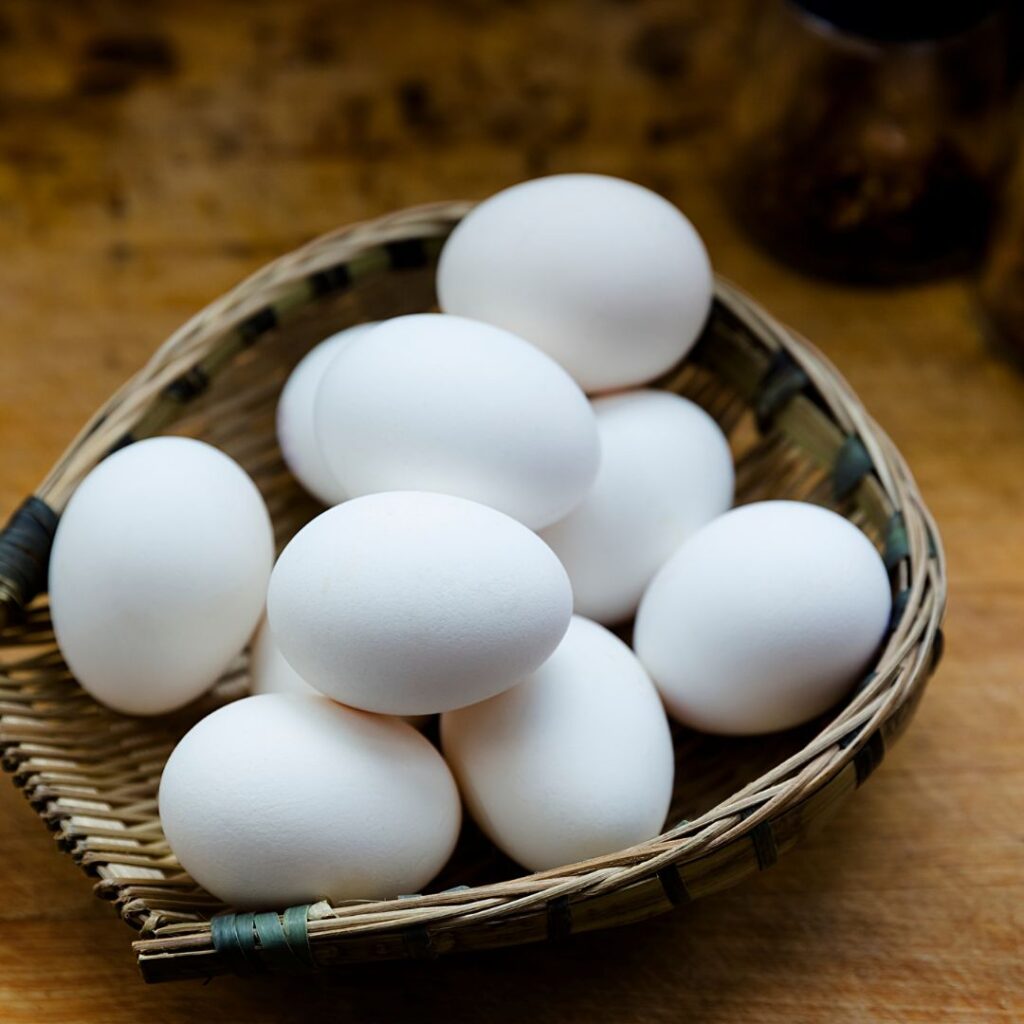
Meat Bird
The leghorn chicken is not recommended as a meat bird. They are small, and the meat will be tough. However, ‘if’ you need to reduce the number in your flock for some reason, these chickens are best reserved as ‘soup birds.’ If you’re looking for a good meat bird, look at the larger breeds, particularly the Cornish breeds.
Leghorn Chicken Temperament and Disposition
The Leghorn is a smart and resourceful bird. They’re known to be good flyers and roost in trees if allowed. They can be a bit noisy, but this varies from strain to strain. Many Leghorn lines are not flighty, but roosters tend to be aloof from their chicken keeper’s presence.
These are a breed that are intelligent and active chickens that like to forage. They’re also good at finding their food if allowed to range. If you’re considering adding Leghorns to your flock, ensure they have plenty of room to move around. They have a lot of energy and can get bored easily.
Do Leghorn Chickens Do Well In A Mixed Flock?
You can generally mix leghorn chickens with other chickens with some planning. You want to be sure your flock has enough room both in the coop and the run area. Leghorns like to forage a lot, so a roomy run will keep them busy during the daylight and make them more likely to keep to their place during resting hours.
It’s always best to try introducing two or more of each breed to a flock, so when introducing your Leghorn to the other chickens, try to have a total of two to three going in together.
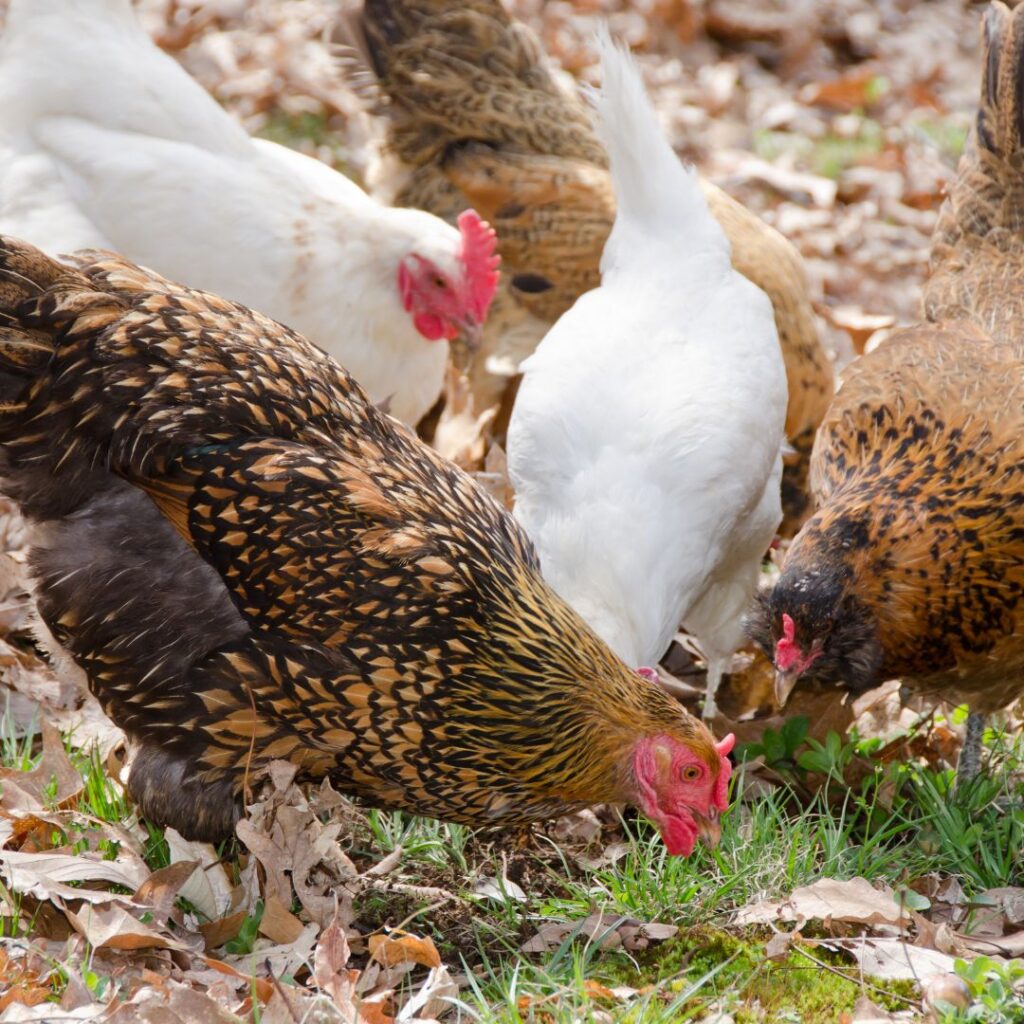
Is a Leghorn Rooster Aggressive?
While they’re not the most aggressive rooster, yes, they can be aggressive in nature. Keep your flock size in mind when placing a rooster in with the hens. Also, minimize the number of roosters you have and a place to separate them if needed.
The Chicken Coop Size for Leghorn Chickens
Space
These chickens are also relatively average in size, so they don’t need as much space as some other chicken breeds. So, how much space do Leghorn chickens need?
The amount of space that your chicken needs are going to vary based on a few different factors.
First, you’ll need to consider the size of the other chicken breeds in your flock. If you have large chicken breeds, your Leghorns will need more space to avoid any potential conflict.
Additionally, you’ll also need to take into account the climate that you live in. If you live in an area with harsh winters, your birds will be confined more often in the winter and need more space.
Considering these factors, we recommend a minimum of six square feet per chicken. This should provide enough space for your Leghorns to move around comfortably and avoid any potential problems with the other members of your flock.
Related: Read About The Brahma Hens and Roosters Here
Perch
Perches should be 8″ minimum if all you have is Leghorn chickens. However, many hobby farmers and backyard chicken keepers vary their breeds. Considering a varied flock, always provide perch sizes that accommodate your largest chickens to keep them all happy.
You can use 2x4s, sturdy branches, upturned barrels and buckets, and even old ladders.
Nesting boxes
You can stick with the usual 12″ x 12″ x 12″ nesting box for standard-sized chickens. Provide one nesting box per four hens in your flock. Again, if you have or plan to have larger breeds in your flock, then go with the recommended size for your largest breed.
Feeders and Waterers
When it comes to feeding and watering your chickens, you’ll need to ensure that you have enough capacity for the entire flock. This also means having fresh food and water available at all times.
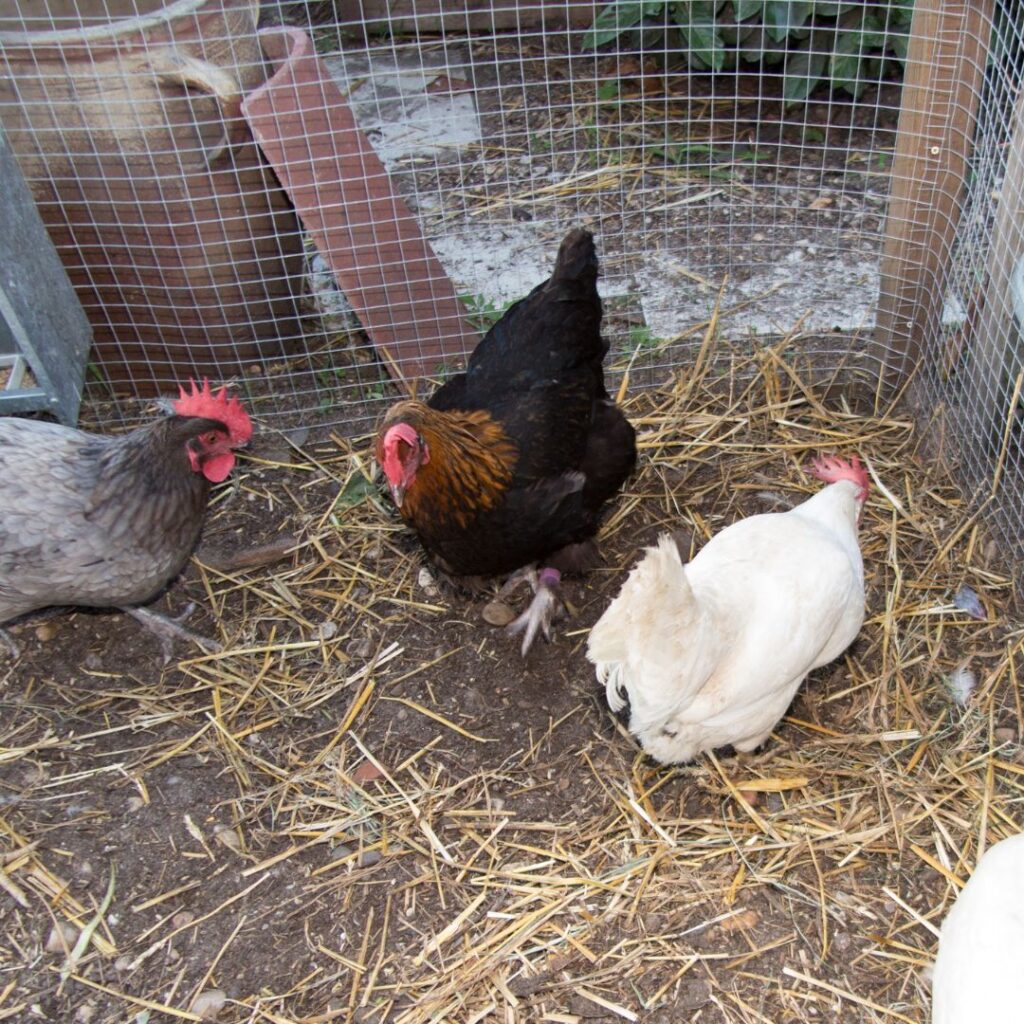
The Chicken Run for Leghorn Chickens
- Space: Leghorns require a minimum of ten to fifteen square feet per bird in their run.
- Shelter from the elements should be provided. A tarp for summer shade and a lean-to or tent for winter shelter from snow and rain.
- Fencing height: A chicken run is a fenced-in area where chickens can roam and exercise. The runs should be escape-proof, with no gaps in the fencing, to keep predators out and chickens in. As Leghorn chickens tend to be flighty, we recommend a minimum of six feet and consider adding hardware cloth to the top of the pen. An option to keep your birds from flying out is to clip their flight feathers. (see video below)
- Predators: Chickens may face a variety of predators, including foxes, coyotes, hawks, and owls. Remember, some neighborhood dogs are considered predators to your flock, even if they are otherwise friendly with your other pets.
Is The Leghorn Chicken Good for Free Range and Foraging?
If Leghorns could speak, they’d tell you they prefer to free-range. They love being active, and foraging is one of their favorite activities. These birds are excellent at foraging and can often get a good portion of their own food from roaming freely around backyards and fields.
Caution to not trim their flight feathers if you allow your Leghorns to free range. This would risk their ability to escape a predator.
Would these Leghorn Chickens Do Well in an Urban Backyard?
While they prefer free range, the Leghorn chickens are also quite adaptable to smaller spaces and will tolerate confinement.
You would be wise to have them with enough coop space and run space, and use great caution in deciding if you will trim any flight feathers.

Are Leghorn Chickens Noisy?
Like most hens, there’s a raucous to be made at egg-laying times. Aside from that, they can be loud when there’s a startling noise or threat of a predator (even humans) approaching. Consider your neighbors and local laws if you are thinking about raising chickens and live in the city.
Cold Hardiness of Leghorn Chickens
Coop Prep
When preparing a chicken coop for winter, there are a few key things to remember. The first is insulation. Chickens need a draft-free environment with plenty of insulation to stay warm. In addition, you will need to make sure the coop is well-ventilated to prevent moisture build-up. Be sure to spot-check the chicken coop weekly for any openings in the coop and pen areas. Proper care will keep your chickens in good health all winter long.
Insulation
One way to prepare your chicken coop for winter is to add insulation. This can be done by adding extra insulation to the walls and roof of the coop or by using materials like straw or hay bales around the outside walls that will help keep the chickens warm. This is also an effective shield from the wind.
Feeders and Waterers
Another important consideration when preparing a chicken coop for winter is food and water. Chickens always need access to food and water. You can provide your chickens with a heated water bowl or heated waterer to keep their water from freezing.
Frostbite
Frostbite is one of the biggest threats to Leghorns in the winter. Provide dry conditions indoors and out (shoveling run areas, providing covered spaces).
Place small amounts of Petroleum Jelly or Musher’s Secret Dog Paw Wax on your chicken’s wattles and combs as needed. Frostbite can be extremely painful and even deadly.
Cool Weather Treats To Warm Up Your Birds
Warm weather treats are good to have now and then. Cook up some veggie scraps, smash them up a bit, and even mix with a small amount of scratch to help warm your birds up.
Other ideas are cooked oats (oatmeal) mixed with dried or fresh fruit, Cooked apples, or warm apple sauce (chunky); you can even leave the peels on.
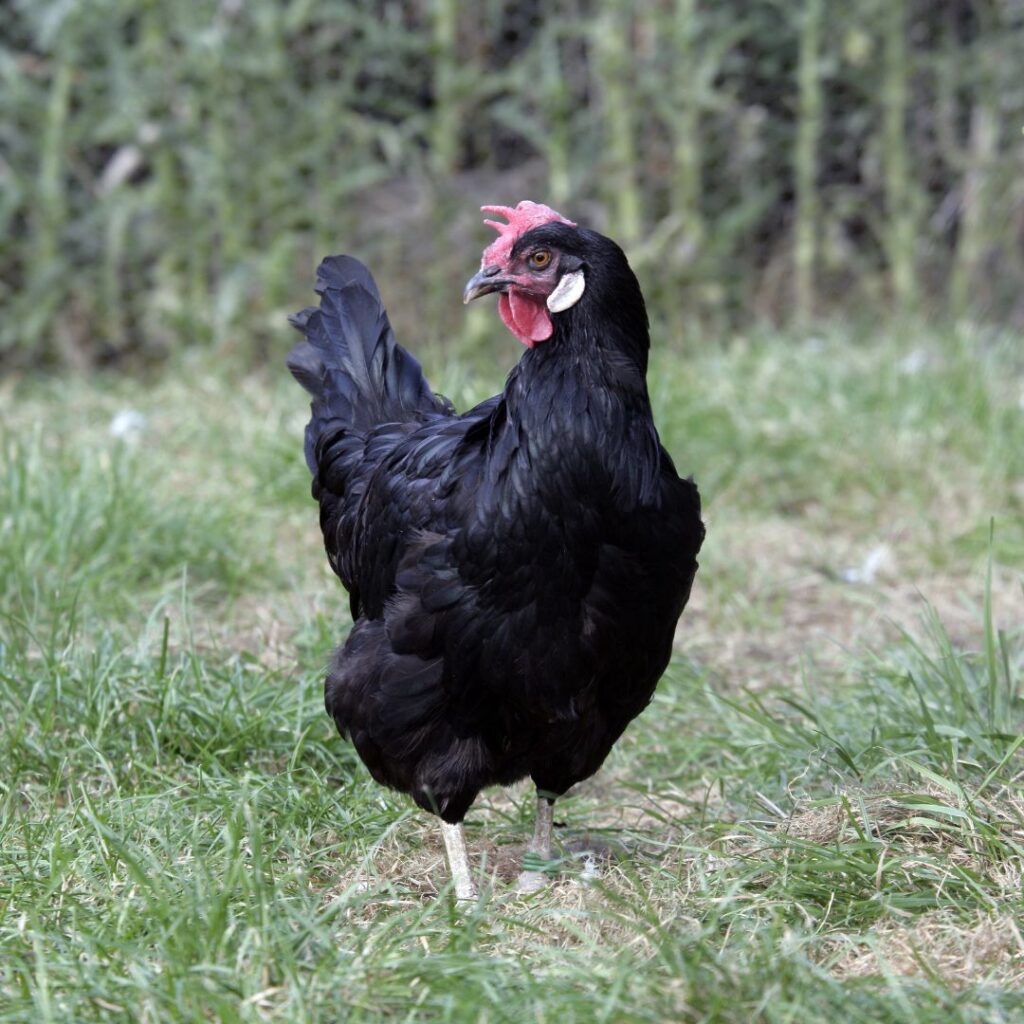
Are Leghorn Chickens Heat Tolerant
Leghorn chickens are a great breed for hot climates because they have large combs and wattles, which help regulate their body temperature. They are also smaller birds, so they don’t produce as much heat as other breeds. Leghorns are prolific egg layers and can withstand high temperatures without becoming stressed. If you live in a hot climate, consider raising Leghorn chickens. Read more about heat-tolerant chicken breeds here.
Coop Prep
Living in a hot climate can present some unique challenges when it comes to keeping chickens. One of the more important things you can do to help them stay cool during the summer is to prepare your chicken coop for the weather.
Make sure the chicken coop is well-ventilated, and check for any areas that may need patching up before summer starts. Clean your coop regularly, and if you’re able to leave doors open for air to flow, or put up some screening in larger open areas, do so.
It’s also important to constantly provide your chickens with plenty of fresh water, especially during hot weather. By doing these things you can help keep your chickens cool and comfortable during the summer months.
Waterers
When the weather is hot, animals need access to fresh, cool water. This means providing more than one water source and adding ice cubes to help them stay cool.
In the summertime, it’s not unusual for temperatures to soar into the 90s or higher. When this happens, chickens need access to plenty of fresh, cool water. If they don’t have access to a lot of fresh water, they can quickly become dehydrated, leading to health problems.
Another consideration in hot weather is that water can quickly become warm and unappetizing. Adding ice cubes can help keep it cool and fresh. You may also want to add extra waterers, indoors and outdoors, to meet the needs of your chickens. (placing outdoor water in shaded areas)
Treats
When the weather gets hot, it’s necessary to provide your chickens with cool, refreshing, and hydrating treats when the weather is hot. Frozen treats are a great option, as they help keep your chickens cool and hydrated.
You can put water in a container with a few kitchen scraps, vegetable peels, etc., or scratch or, a combination, fill with water and freeze. Even frozen fruit and vegetables are a great option. Chickens love pecking away at the frozen treat as it melts throughout the day. It helps with hydration and boredom.
Related Post: Do Chickens Lay Eggs In The Winter?

Life Expectancy of the Leghorn
The Leghorn chicken is a breed that was originally developed in Italy. They are a production breed that has been bred as an egg layer. They are not usually kept for pets but are used for their eggs.
As a result, the Leghorn chicken lifespan is relatively short and you can expect them to live about four to six years.
Leghorn Chickens: Final Thoughts
All in all, the Leghorn chicken is a great addition to any flock. They’re hardy birds that are relatively easy to care for. These are an active chicken breed, so make sure you have enough space for them to roam and things for them to do, and you’ll have a happy and healthy flock of Leghorns in no time!
The White Leghorn is an excellent choice for backyard chicken keepers or farmers looking for a reliable layer bird. Though they are not especially docile or friendly chickens, their high egg production makes up for any personality shortcomings. With proper care and management, a flock of White Leghorns will provide you with years of fresh eggs.
Read: Tips for Raising Chickens Here
FAQ’s
What kind of chicken is Foghorn Leghorn?
Foghorn from the kid’s cartoon is depicted from a Leghorn Rooster.
How many years do Leghorn hens lay eggs?
A leghorn hen will lay almost her entire life starting around 4 1/2 months until 4-6 years.
How Long do Leghorn Chickens Live?
The average life expectancy of a Leghorn chicken is five years.
Do white Leghorns grow fast?
Yes, these chickens mature and start laying between 4 – 6 months.
Is Leghorn chicken a cross-breed?
No. The Leghorn chicken is a purebred breed from Italy.
Where did the Dark Brown Leghorn originate from?
The dark and light brown leghorns and the modern white leghorn chicken are quite popular among commercial breeders worldwide. Their origin is from Italy. They were first introduced to the U.S. in 1853.
Is the Leghorn chicken a heritage breed?
Yes, this is a heritage breed. (although, there are hybrid versions of the leghorn chicken available today)
Are Silver Leghorns rare?
The Silver Leghorn is a rare and exquisite chicken. Males are silvery-white and lustrous greenish-black. Females have a salmon-colored breast with a back and wings of silver-gray colors.
Is it Leghorn or Leg Horn?
Here in the US, we pronounce it Leg Horn, but the true name is Leghorn and pronounced leggern (or so we’re told).
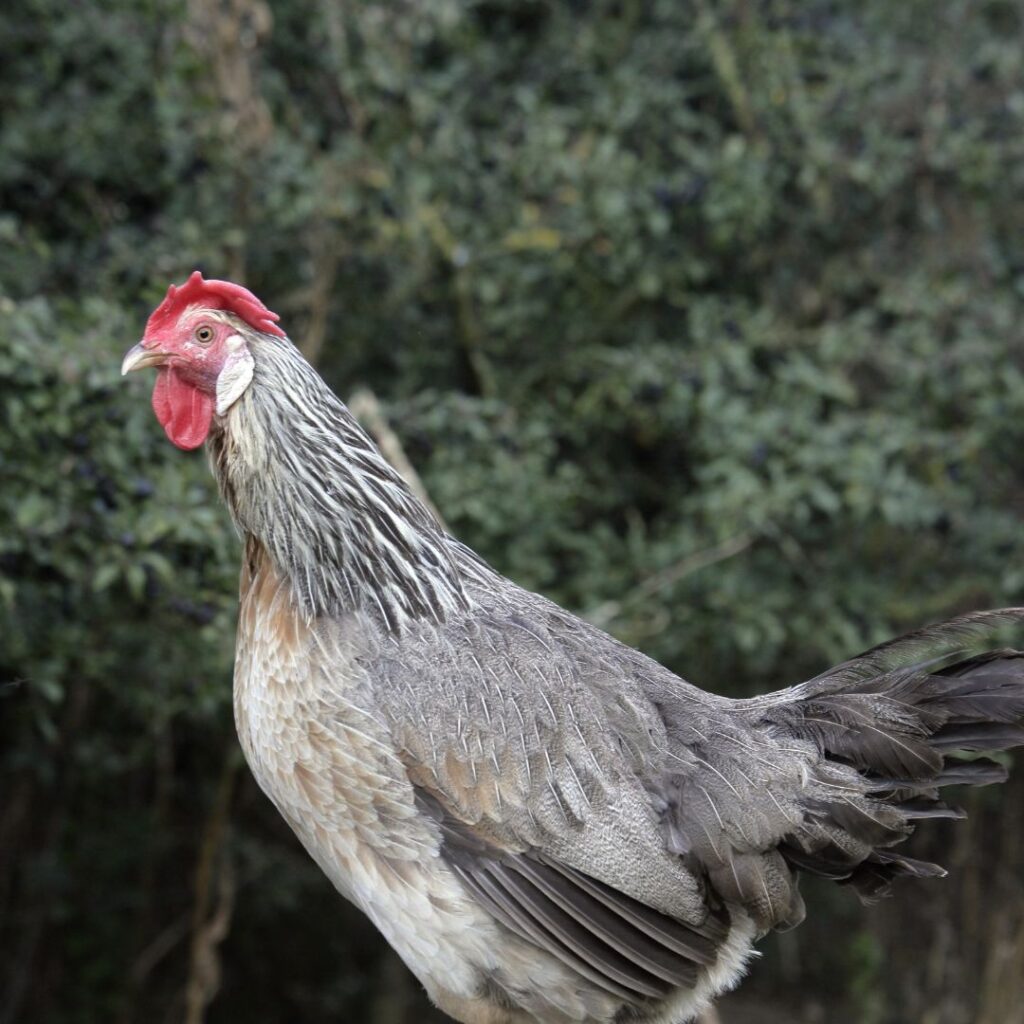
Before you go, lay your eyes on this beautiful Blue Breasted Brown Leghorn Rooster!


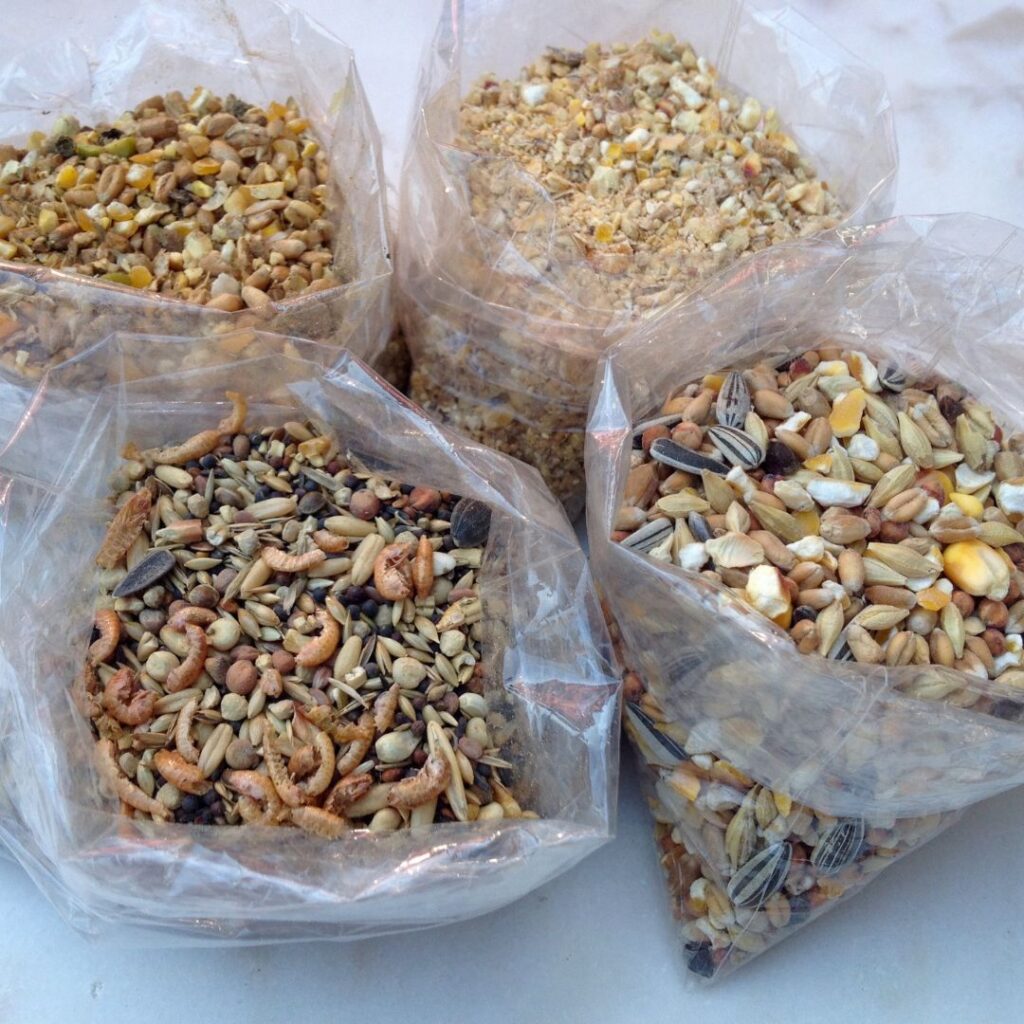
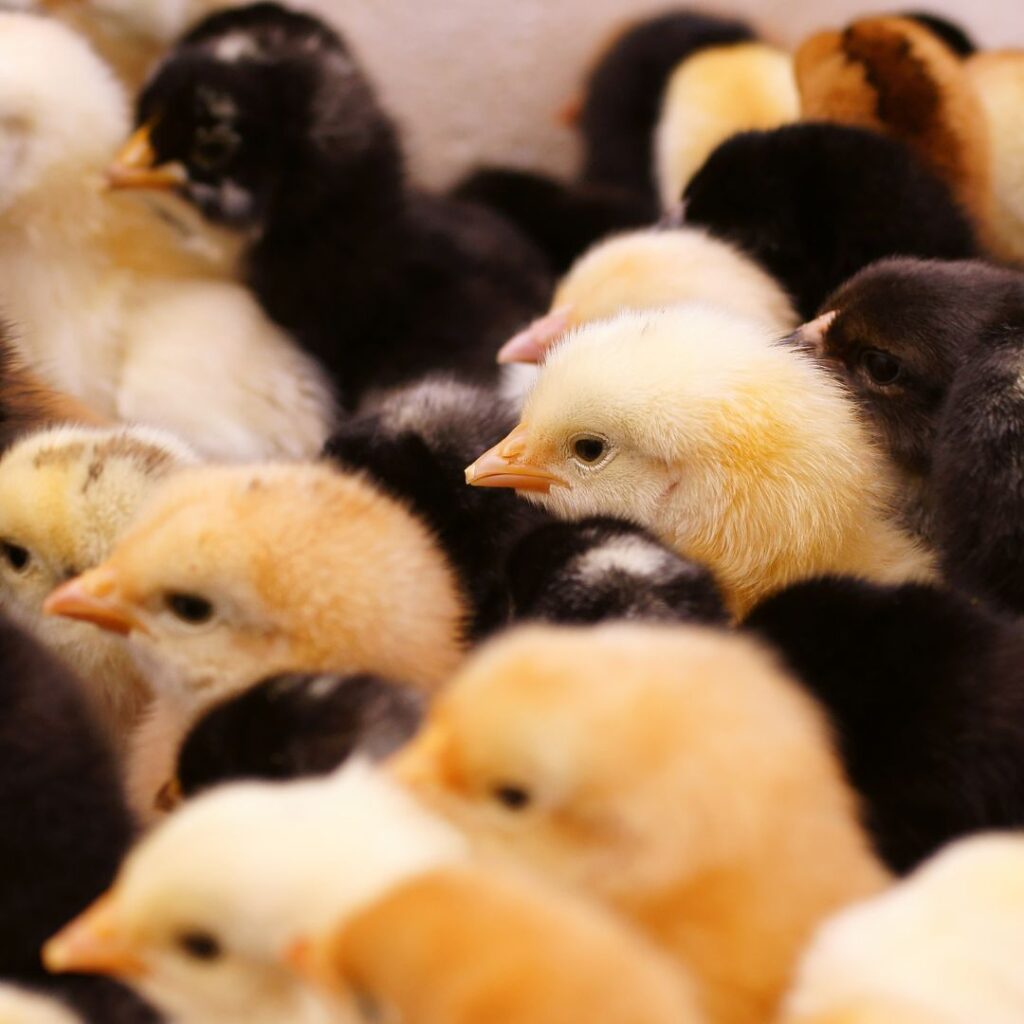
Pingback: 18 Cold Hardy Chicken Breeds For Harsh Winters - Gilmore's
Pingback: How Many Eggs Do Chickens Lay? This May Surprise You! - Gilmore's